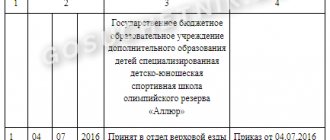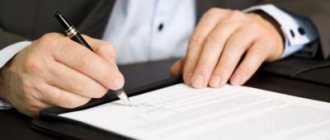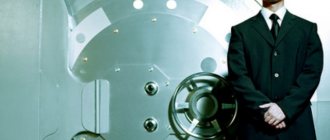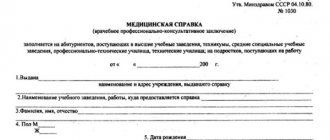A lie detector, or polygraph, is not a mythical means for detecting deception, as some people still believe, but a completely tangible device that records changes in the reactions and physiological parameters of the subject when answering certain questions. It is believed that the prototype of the modern device is a device invented in 1921 by American medical student John Larson. However, the theoretical basis for the research was laid by the US psychologist and lawyer William Marston, who identified the relationship between a person’s truthful answers and changes in his blood pressure, pulse, and respiration. It was he who developed the first list of questions for polygraph testing. The serial production of portable lie detectors was started by American businessman Leonard Keeper, who improved the achievements of his teachers. The modern lie detector has many parents, but how much can and should you trust its readings? Experts do not have a clear answer.
Important! The polygraph does not give a 100% picture of the event that occurred; it only records the reactions of the subject. A person can sincerely believe in a lie and resist the facts, so the polygraph is just a projection of a subjective attitude to certain events.
Deliberately false information:
- Negative reasons for employment (for the transfer of information, participation in corruption and other actions to the detriment of the company)
- Onerous financial obligations
- Presence of a “parallel” business
- Dangerous diseases (tuberculosis, psychiatry, venereology, etc.)
- Fake documents.
- Inaccurate hidden information (about education, places of work, falsification of accompanying documents, etc.
- Inflated salary at last job.
How the device works
A special sensor is placed on the candidate’s finger to record skin reactions, breathing sensors are attached to the chest and abdomen, and pulse sensors are placed on the arteries. In this way, all possible physiological reactions of the applicant to a particular question are monitored.
The polygraph itself is, most often, a portable device, similar to a computer, which records any changes in the parameters of the subject and displays them on the screen in the form of a polygram - a graph reflecting fluctuations in units.
The device works well if the candidate does not move, does not strain his muscles, if he is calm and has had enough sleep.
Therefore, it is always advised to rest before you have to take a lie detector interview. It is advisable to look at one point during the procedure.
Offenses and legal proceedings:
- Against the person: murder, grievous bodily harm, rape, etc.
- Against property outside of work: theft (not concerning places of work), fraud, embezzlement, robbery, robbery, extortion, theft, deliberate destruction of property, etc.
- Illegal groups: banned sects, criminal structures, manufacturing of weapons and ammunition.
- Illegal possession and handling of firearms.
- Imposition of encumbrances and prohibitions by the court
- Participation in lengthy litigation
- Concealment of criminal records
- Conspiracy with crime: false entrepreneurship (concealment of criminal activities), conspiracy with criminals to obtain illegal benefits, buying stolen goods, tip-offs, money laundering, etc.
The principle of operation of a lie detector
Analog devices that appeared almost a century ago and digital devices used today record not only traditional physiological indicators of the body: pressure, pulse, respiration. Modern sensors are able to recognize the electrical conductivity of the skin with true or false answers, increased sweating, and visually invisible changes in the functioning of the brain and diaphragm. The test takes approximately 1.5–2 hours and is carried out according to certain rules that everyone should know about: it is quite possible that you will have to face the need to pass a test, which has become a fashionable trend in some areas of life and business.
- The study is carried out in a room with good sound insulation - any external factors can affect a person’s brain activity.
- The polygraph examiner discusses an approximate list of questions with the subject in advance in order to understand that he is not responding adequately to the upcoming test.
- During the test, a person must sit still, for which modern polygraphs are equipped with soft, comfortable chairs.
Research obtained using a lie detector can only serve as indirect evidence and is not a guide for investigative and judicial authorities.
Attention! A lie detector test is carried out only with the written consent of the subject. Research imposed against a person's will is illegal!
Drug addiction:
- Manufacturing.
- Sales and distribution.
- Shipping.
- Storage.
- Purchase.
- Use.
This is a classic minimum required set of polygraph questions when applying for a job. For leadership positions or important positions, it is recommended to ask additional questions related to the specifics of the profession.
Check out the candidate selection criteria used by successful large companies in the top 3 largest companies in the Russian Federation. This is a very effective method of improving the quality of human capital for company development.
Categories of questions for testing
The polygraph, previously familiar to ordinary citizens except from spy action films, has today become a kind of fashion trend. It is used by employers to ensure the honesty of their employees, organizers of television talk shows, and even ordinary citizens who are willing to pay for a specialist’s service. Since the device has gained popularity, it is difficult to briefly describe what questions are usually asked on a polygraph. There is an unshakable rule: the wording should be such that the answer can only be “yes” or “no”.
Conventionally, all questions asked during testing can be divided into three categories:
- general (neutral),
- tests,
- basic (test).
The first type of questions is used to configure the device to the individual parameters of the person being tested. The main block consists of topics that interest the customer. Employers are interested in finding out what kind of lifestyle a candidate leads, how honest he is, and whether he is prone to conflicts.
Polygraph when applying for a job: what is the procedure
Some employers have strict requirements for their potential employees. They consider it necessary to establish not only the level of qualifications of the applicant, but also to check some facts from his life. Information provided by a future employee of the organization can be analyzed using a polygraph.
A polygraph or lie detector is a device with which psychophysiological examinations of the applicant are carried out.
The polygraph records various human parameters:
- cardiovascular activity;
- electrical resistance of the skin;
- breathing rate;
- other physiological parameters.
The obtained measurement results are analyzed, as a result of which the degree of reliability of the information presented is determined. The developers of the technique proceed from the fact that when a person lies, he becomes nervous. Such a reaction is reflected in indicators of the physiological state. Deviations from the state of rest are precisely what the lie detector registers.
Table: types of polygraphs
| Device type | Features of work |
| Analog polygraph | Data recording is carried out on chart paper. |
| Digital polygraph | The recording is made on electronic media using a computer. |
Using a polygraph, the employer determines whether the applicant is suitable for the position for which he wishes to be employed.
The lie detector allows you to calculate the following facts:
- whether the applicant used alcohol and drugs;
- whether he falsified information about himself;
- whether the potential employee has a criminal record;
- whether the applicant took bribes at previous places of work, etc.
A polygraph test implies not only the use of the device, but also the participation of a qualified specialist.
It is the employee performing the inspection that has a greater influence on the quality of the procedure. The device itself only records the results of the study.
It is believed that the polygraph method has a high degree of reliability of 90–96%. However, the cost of such a device is quite high, so not every employer can afford to use it.
Who cannot be tested by polygraph?
There are a number of social categories of people with whom interviews using a lie detector are prohibited:
pregnant women over the fifth month;- minor children;
- persons with mental disabilities, as well as nervously exhausted persons.
There is a separate ban on conducting such interviews with individuals under the influence of alcohol or drugs.
The whole truth about the polygraph (lie detector). Dispelling myths
Almost all of us have heard of a “lie detector” or “polygraph” - a set of equipment for detecting lies. However, I will tell you straight, everything that you have heard and everything that is described on the Internet is, by and large, bullshit: half of the articles are posted on the websites of companies that provide services in this area, and the other half are cheap publications collected from scraps of information on the Internet copywriters who have never even seen the equipment. And even on Wikipedia the article is about nothing! And in order to put an end to this issue and write the most objective article, I decided to take a polygraph myself. After a short search through advertisements in Yandex.Direct, I became interested in a company whose website provided fairly detailed information about their services, a description of the digital equipment they use, and an approximate price range that seemed adequate to me. I submitted a request through an online consultant. An hour later the polygraph examiner called me back and agreed to meet on Tuesday in their office on Dmitrovskoe Highway. After Tuesday arrived, I put 10 thousand in my pocket and headed to their office. Arriving at the office and talking for the first 5 minutes with the polygraph examiner, I realized that my choice was right: I ended up with a qualified specialist, very sociable, who willingly told me everything. Testing was carried out on equipment from the Lafayette LX4000 company, which has been producing professional equipment for polygraph examiners for over 40 years (since 1972).
What is a polygraph?
First of all, a polygraph is not equipment, but a complex consisting of an apparatus and a psychologist. Which component is more important is a rather complicated question.
Types of polygraphs
There are both analog and digital. The first ones have long been rarities, now they can only be seen in museums, and digital ones consist of a block to which sensors are connected, which in turn is connected to a computer on which special software is installed.
What is being measured
- Breathing in the chest area;
- Breathing in the abdominal region (diaphragm);
- Electrical conductivity of the skin;
- Blood filling in peripheral vessels;
- Heartbeat.
Additionally:
- Blood pressure sensor;
- Mat with sensors for the “fifth point”;
- Mat with sensors under your feet.
What they ask
Depending on the order: checks for theft, checking candidates for a position, or resolving intra-family issues, there is a template of questions that is tailored to the current check.
How long does the session last?
On average about 1.5 hours. Sometimes a little less, sometimes a little more - it all depends on the specific situation.
Reading accuracy
Usually they talk about 80%, however, in fact, the figure is at the level of 93-95%. That is, only 5-7 people out of a hundred are able to pass a polygraph so that the result is incomprehensible (pay attention to the phrase “the result will be incomprehensible”: that is, it will be ambiguous, on its basis it will not be possible to state the results unambiguously, but nevertheless, there will be some result). However, as they say, “for every tricky bolt there is a nut with a left-hand thread,” and more on that below.
Procedure
You sit down in a chair, they put sensors on you (they may put them on first, and then you sit in the chair), sit down comfortably and they tell you how you should answer the questions.
As a rule, test questions are asked first to calibrate the equipment. They ask questions to which the polygraph examiner knows the exact answer: your name, surname, what city you were born in, marital status, what city you are in, etc. You can answer “yes” or “no”, therefore, questions are asked like “Are you in Moscow now?”
You are given 15-20 seconds to answer, so you can think before answering. Further, after the polygraph examiner has an understanding of how the equipment should react with “honest” answers, they begin to ask basic questions like “did you steal $10 million?” As a rule, such questions are asked by surprise.
During the procedure, not only the moment when the answer sounds is recorded, but also the state before and after the answer, that is, the parameters of the body are constantly recorded.
Psychological pressure
It turns out that it is very strong: you will be asked the same questions, sometimes slightly paraphrased. If your reaction to a question is twofold, then you will be asked questions again and again, at different intervals, analyzing and comparing the results with each answer.
Is it possible to fool a polygraph?
In principle, yes, however, this requires long training. In short periods of 8-10 questions, on the fourth attempt, on the “numbers” test, I managed to falsify the result. However, it is important to understand that these were tests for 2 minutes and over a long distance, without special training it will be extremely difficult to control yourself: after all, you must control the excitement of the body throughout the entire test!
Numbers test
The cards have numbers written on them, they are easy to remember because they are: 11, 22, 33, 44, 55, 66. You pull out a card, remember the number and can keep it. Next, the polygraph examiner asks the questions “Is this the number 11?” etc., in a random order and you must answer “no” to all questions. In my case, the sensors of blood filling in peripheral vessels and electrical permeability did not give objective values; only my heart rate and breathing gave me away. By controlling my breathing, I was able to control my heart rate at the same time. To falsify the results, I constantly thought about another number and when another number was named, I consciously changed my breathing rhythm and increased my internal nervousness, due to which the polygraph examiner, based on the polygraph results, made an incorrect conclusion about the numbers on the card that I had. But, testing yourself for 1.5 hours, answering 300 questions is not an easy task and without quite lengthy polygraph training, passing it is extremely unlikely!
Dispelling myths
There are several myths on the Internet that you can pass a polygraph, but none of the described methods can be called effective.
Not getting enough sleep
Like, if you are tired, you will be calmer. Yes, you will be calmer, but the polygraph has a very high sensitivity and the device can be calibrated when the body’s reaction is low. Even if a person is tired, he still continues to give a reaction when he has to lie.
Drink alcohol
There is no efficiency either. If you drink a little, the equipment will be calibrated, and if you drink too much, so that your consciousness becomes clouded, then you will be sent home, you will be forced to take a polygraph again.
Pharmaceuticals
That is, the use of sedatives, such as Phenazepam, etc. The effect is the same as in the case of alcohol: in order for the body’s reaction to seriously decrease, you will need to pump yourself up well with pills, and here I’m not sure that with such a dosage you will achieve independently before the polygraph.
Increased agitation
As an option, drink coffee or energy drinks, and more. It is believed that due to increased excitement, the truth will be mixed with lies, but, in any case, you can’t trample against the body, and even after pumping up on caffeine, the body’s reaction in those moments when it is necessary to lie will be pronounced.
Put the button in the shoe
Excuse me, when are you going to press this button? With every question? Or when is it necessary to lie? Or maybe when you tell the truth? Or random?
In any case, the reaction to pain is a little different than when the body is excited, when you have to lie and when your answers determine whether you will get a serious position, or a lawsuit will be opened against you, or your wife will leave you, taking half of the property.
To whom does the polygraph react poorly?
It was very interesting to learn that the polygraph reacts extremely poorly in cases where the subject is asked questions in a language other than his or her best command.
In particular, many polygraph examiners refuse to work with those who do not speak Russian well: this is explained by the fact that a person begins to translate the question into his “native” language, then generates an answer, after which he translates it into Russian and answers “yes” or “no.” ", and in this procedure the truth is lost. Mentally abnormal. That is, patients with schizophrenia who suffer from hallucinations are those who do not distinguish the real world from the fictional one and who can inspire themselves with anything.
There is a category of “pathological liars,” but essentially they manage to pass the polygraph for the same reason as the people from the previous paragraph: by self-hypnosis they confuse their emotions.
An extremely rare category of people who are simply calm. For example, intelligence officers who, after long training, learned to pass polygraph testing.
A few words about the “nut with a left-hand thread” or what to do if the polygraph data does not allow you to give an objective picture?
And in this case, polygraph examiners have other methods.
Additional sensors
They are placed under the “fifth point” and under the feet. These sensors allow you to detect muscle tremors - rapid rhythmic contractions.
Nonverbal cues
Throughout the test, a camera is installed that films the subject and records facial expressions, muscle contractions on the face, etc. This is demonstrated in more detail in the series “Lie to Me,” and you can also read in Paul Ekman’s book “The Psychology of Lies.”
Handwriting test
A person is asked to write in free form something about himself, where he is from, how he came to the city, something about his loved ones, and then they ask him to describe the situation in his own words and you know, after that the handwriting begins to creep up or down, changes inclination of letters, font size, etc.
As I wrote above, a lie detector test is not only polygraph data, it is also the skills of a polygraph examiner and knowledge of psychology. Once I got my crown on after being able to falsify the results in previous tests, I was asked to take a name test. The task is simple: on a piece of paper I write 5 female names and among them the name of my sister, and the polygraph examiner’s task is to determine who exactly my sister is. And while I was filling out the names, the polygraph examiner looked at my sheet out of the corner of her eye. During the test, I tried to falsify the third name, however, in the end, the polygraph examiner calculated the correct name, and this is how she explained it:
“Usually, statistically, no one writes their name first. The second was similar to the first, but I thought about the last name for too long. Therefore, it was either the third or fourth name. Since I gave a more pronounced reaction to the third name, and I already knew that you give a specially enhanced reaction to incorrect answers, then the 4th option remains.”
That is, as soon as your first contact with a polygraph examiner begins, they immediately begin to monitor you, study your behavior and, based on this, create your psychological portrait.
Can polygraph data be used in court?
In principle, yes, but the polygraph data is only indirect evidence of guilt and, based on the polygraph data alone, they can neither convict nor release.
Circumstantial evidence usually helps investigators and interrogators understand which side to approach the case and where to find direct evidence and evidence for indictment or release. By the way, there are also certain requirements for a polygraph examiner: in addition to the appropriate education, the polygraph examiner must test at least 1000 people using a polygraph, and also have the appropriate certificate, only after which his data can be used in investigations or trials.
It would seem, why can’t all the technologies described above be used to make judicial decisions? There is such a term as “Brokaw Trap” (English: Brokaw hazard) - ignoring the individual speech and behavioral characteristics of a person when determining the degree of his truthfulness. The concept was introduced in 1985 by psychologist Paul Ekman in his book “The Psychology of Lying,” based on the reasoning of the famous American journalist and TV interview master Tom Brokaw about how he determines the insincerity of his interlocutor:
Any manifestations, in most cases clearly indicating deception, for some people may turn out to be only part of their usual behavior. I will call the possibility of misjudging such people the Brokaw trap. The verifier can always fall into this trap, especially if he is unfamiliar with the suspect and does not know his typical behavior.
Interpretation of results
Correct interpretation of the results is the most important thing in testing, and that is why the polygraph examiner must be a highly qualified psychologist.
Let me give you a small example
: you are an exemplary family man, an ordinary office plankton, you have a wife, a child and a mortgage. And so you were detained on suspicion of drug distribution. The judge ordered a polygraph test. You are covered in sensors and after the first harmless questions during which the equipment is calibrated, you are asked the question: “Did you distribute drugs?”And here you will be overwhelmed by a flurry of thoughts:
- Damn, I didn’t do anything wrong! - What if the polygraph makes a mistake? This happens! — What if the polygraph examiner is not qualified enough? - Can I really get a minimum of 8 years just like that, for no reason? - And the wife? How will she treat me? Will he remain faithful? Will it wait for me? - Mortgage! Who will pay it if I am imprisoned and given no time for anything?
And this flurry of thoughts will raise all the sensors on the polygraph, and if you answer “no” they will be like this (light red background)
That is why the qualifications of a polygraph examiner are important - so that he is able to distinguish an attempt to lie from a nervous overstrain.
That is why the tests take 1.5-2 hours, during which hundreds of questions are asked. Our meeting lasted about an hour, and as a result, I was quoted a cost of 4 thousand rubles, which turned out to be even lower than my expectations. I am extremely grateful to the XXX company and the polygraph examiner YYY (since the post is non-advertising, I am not naming names) for their time and detailed description of the technology.
Questions?
PS: I was so interested in this area that I agreed with my polygraph examiner about training and will start attending courses next week. Who knows, maybe in the future such abilities will be useful to defend the Motherland. Well, in general, it’s interesting what results can be achieved.
What is a polygraph and how to pass it
Some people have the misconception that it is very easy to fool a lie detector. This begs the question: why is it needed then? But it's not that simple.
Indeed, it is quite possible to complete the test without noticeable biophysical changes (we wrote about the specific history of polygraph deception earlier), but the fact is that for the first twenty minutes you will be asked “calibration” questions, setting up the device individually for you.
So, the same reaction to all questions asked by a specialist, of course, will not harm you, but it will not help you either. Moreover, the test results may be canceled and a new one assigned. The whole secret is not to keep all emotions under control, but to show the desired reaction to the question at a certain moment.
Moreover, this must be done in such a way that the polygraph examiner does not become wary.
We offer for viewing a short video about taking a polygraph test in modern realities.
Using a polygraph
All restrictions on the use of a polygraph are associated with strong feelings during the testing period. It negatively affects human health and can provoke exacerbation of chronic diseases. It is also prohibited to use this device if the respondent is inadequate.
Research cannot be carried out if a person is physically or mentally exhausted. For example, if a person has not slept for several days or has not eaten anything for several days. There is also a list of diseases for which the use of the device is prohibited:
- any mental disorders;
- chronic respiratory diseases;
- pathologies of the cardiovascular system;
- previous heart attacks and strokes;
- epilepsy;
- severe pain of any nature;
- presence of cold symptoms: cough, chills, nasal congestion;
- chronic alcoholism and drug addiction;
- pregnancy with complications, as well as the second and third trimester of pregnancy.
The essence of the lie detector test and the candidate during an interview
A polygraph is a technically complex device that resembles a laptop in appearance. Sensors are attached to the mobile device, which are fixed on the subject during the test. To read a person’s reaction, a tonometer is also used, which detects changes in physiological readings:
- epidermal resistance;
- HELL;
- heart rate and contraction of the heart muscle;
- function of individual parts of the brain.
The developers of the lie detector claim that if the test subject lies or withholds information, then the body unconsciously reacts to the fear of being discovered. For example, sweating increases, breathing becomes intermittent, and blood pressure rises.
Is it possible to fool a polygraph?
The expert's competence influences the conclusion
The lie detector cannot be fooled. When researching, the qualifications of the expert conducting the research are very important.
If, summing up the results of the test, he is able to distinguish mental overstrain from a lie, then the result will be interpreted with a high degree of probability.
The inspector may be misled if there are factors such as:
- the body is overexcited. This distorts the device’s results and contributes to the production of incorrect data;
- on the eve of the study, the subject drank alcohol. Alcohol reduces the sensitivity of cells and inhibits physiological processes;
- Reaction speed is affected by severe fatigue.
It must be remembered that if a question seems incorrect, it can be rejected. You can also interrupt the research process at any time.
Probabilities of error in the operation of the polygraph
The developers and supporters of the device are ready to use the equipment in any unclear situation.
For example, they are used in work to identify employees who incorrectly perform their job duties. They also strive to identify violators of discipline. But controversial situations about the reliability of the information received still do not subside. A number of experts rely entirely on the results, while others note only 50% of correct answers. Read also: Mortgage for teachers
Myths about the error-free operation of the device are spread by those who are comfortable with people’s fear of testing. Another category of such persons are companies providing similar services.
In many states, device readings are not accepted as evidence in court. However, if the management uses this approach for an interview or inspection, then it trusts the results. It is inappropriate to engage in conflict about efficiency or errors. Applicants or employees should weigh the pros and cons of the test. Upon making a decision, sign the consent. In case of dismissal or refusal of employment on the basis of refusal to take a polygraph test, you must file a complaint with the labor inspectorate.
Refusal to take a lie detector interview
Taking a detector test is a stressful situation. There are several groups of people who are not allowed to participate in testing for medical reasons:
- pregnant women;
- deviations in mental functioning;
- course of a serious illness;
- minor citizens.
There is a risk of getting incorrect results. This is due to strong excitement, which can be dangerous to health. In the case where a person has given the go-ahead to undergo testing, but during the process notes signs of tachycardia, it is better to stop the procedure. However, a healthy, capable person has the right to refuse this form of interview.











